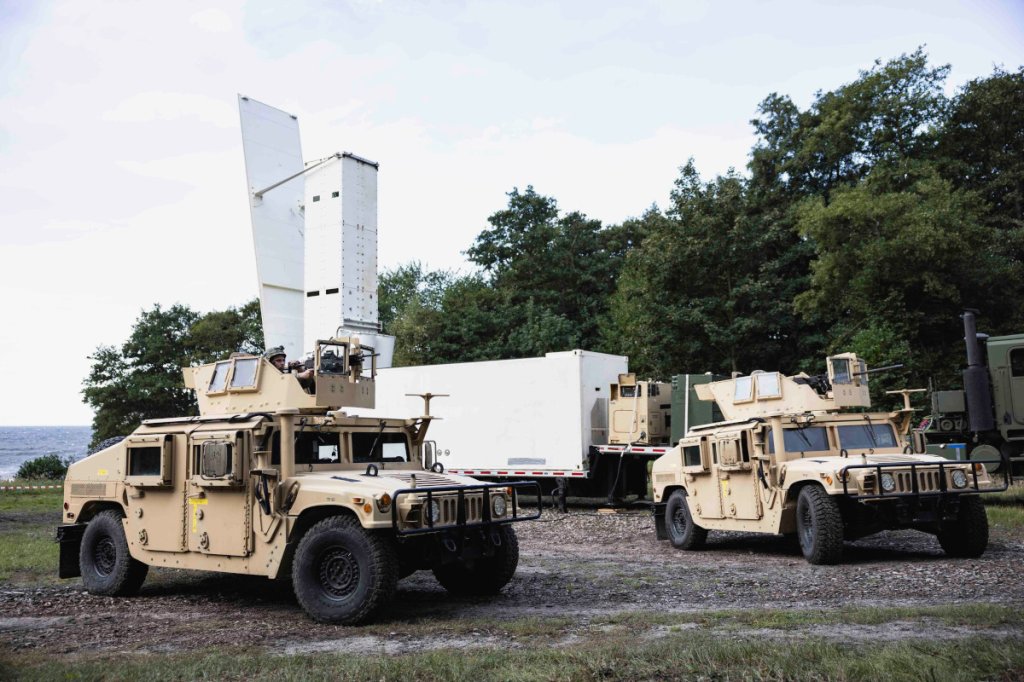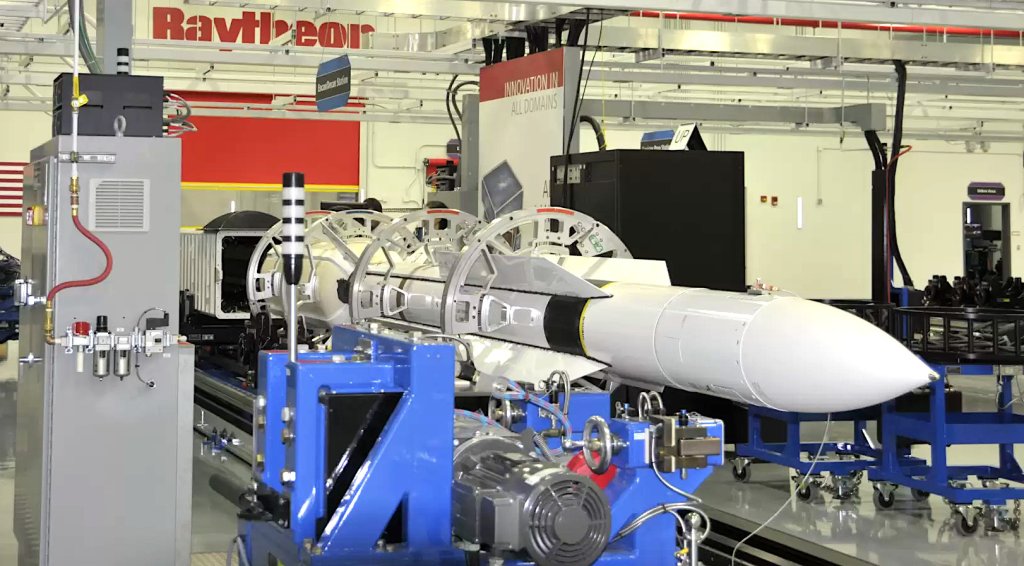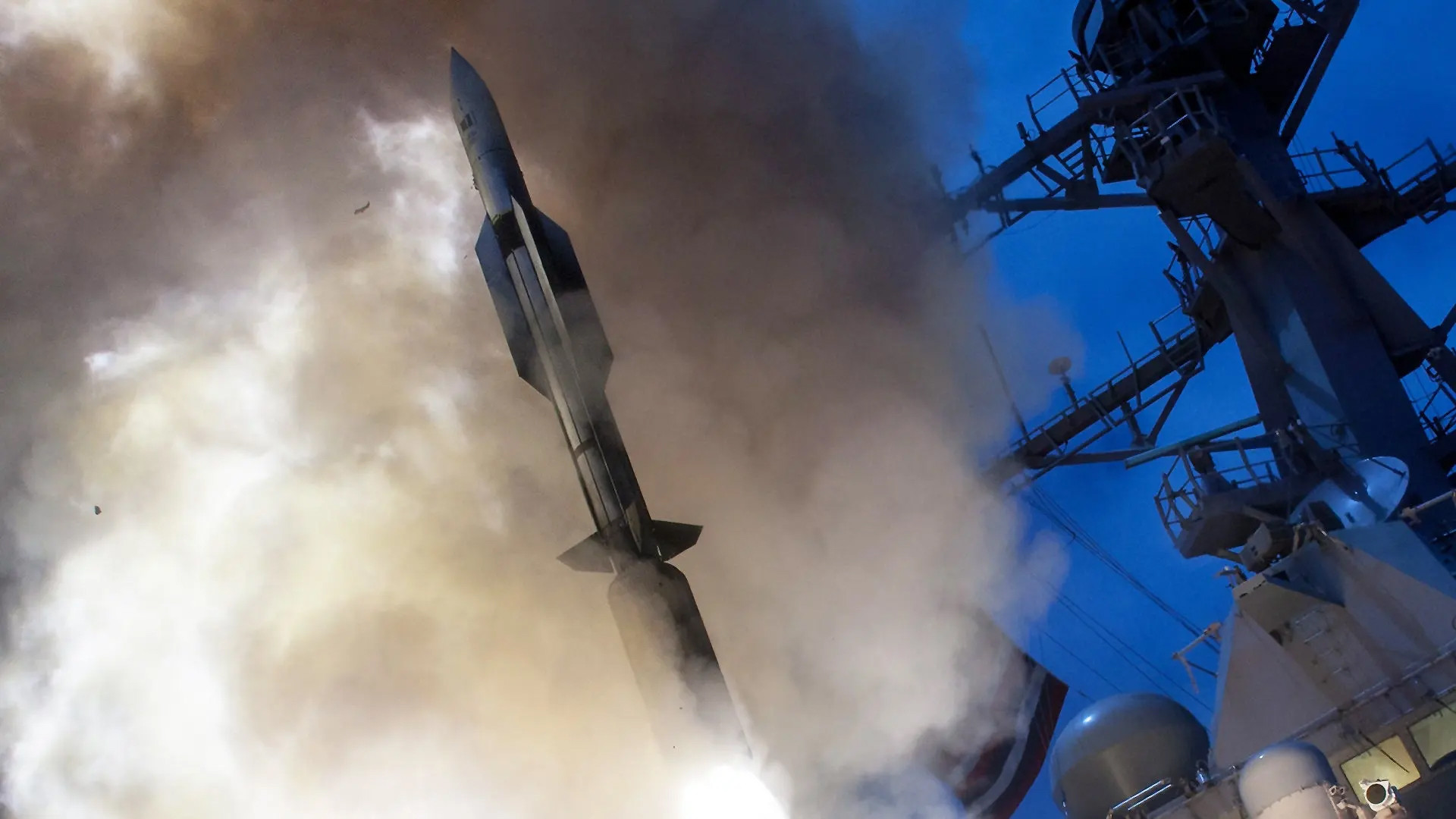The U.S. Army is interested in the increasingly popular and now combat-proven SM-6 missile as a possible new addition to its air and missile defense arsenal. The weapon, which the service is already in the process of fielding as a new long-range means to strike targets on land at sea, could be a boon for its highly in-demand air defense forces. This all also underscores the SM-6’s still-growing versatility, which has now extended to the air-launched domain with the recently revealed AIM-174 variant.
Lt. Gen. Sean Gainey, head of the Army’s Space and Missile Defense Command (SDMC), talked about SM-6 and other air and missile developments during a talk the Hudson Institute think tank hosted today.
“You have [the] Army looking at Navy interceptors like the SM-6,” Gainey said in response to a question about cooperation and coordination between the services on air and missile defense work.

The SM-6 missile program, which the Navy manages, was originally developed as a surface-to-air interceptor and has demonstrated capability against a variety of aerial threats, including ballistic missiles and even novel hypersonic threats in the terminal phases of their flight. The SM-6 can also be employed in a ballistic mode against targets at sea and ashore. A Block IB version of the SM-6 that promises significantly expanded performance remains in development, too.
The Navy has fielded SM-6 as a ship-launched surface-to-air and strike weapon and now also has a version that its F/A-18E/F Super Hornet fighters can fire called the AIM-174. The missile is a key part of the Aegis Ballistic Missile Defense (BMD) system that the Pentagon’s Missile Defense Agency (MDA) manages, but is not integrated into the Aegis Ashore sites on land.

The Navy also has a containerized Mk 70 Expeditionary Launcher that can fire SM-6s, as well as Tomahawk cruise missiles. The Mk 70 has been tested aboard crewed and uncrewed ships, as well as in a trailer-based configuration on land. The Navy has indicated an interest in employing Mk 70s in the ground-based air and missile defense role, as well as for long-range strikes, in the past.

As already noted, the Army is itself in the process of fielding SM-6 as part of its Typhon ground-based missile system, which uses a launcher design related to the Mk 70 that can also fire Tomahawks. However, to date, the service has said its plan is to use Typhon to employ SM-6 in the surface-to-surface strike role only.

The Army is also already developing and fielding new radars and networking capabilities that would be ideally suited to supporting the introduction of SM-6 as a new tool for shooting down aerial threats.
Just last week, Raytheon announced that it had “demonstrated a simulated complex missile engagement leveraging the U.S. Army’s Lower Tier Air and Missile Defense Sensor, or LTAMDS, and Integrated Air and Missile Defense Battle Command System, IBCS, launching the U.S. Navy’s premier, long-range effector, Standard Missile-6″ during the Valiant Shield 2024 exercise in the Pacific in June, per a company press release. “The experiment, which used a combination of physical systems’ hardware and simulation, demonstrated the effective detection and identification of an in-coming threat, target and track data transfer, launch command, and the successful guide to missile intercept.”
SM-6 and the LTMADS radar are both Raytheon products. Northrop Grumman is the prime contractor for IBCS, which you can read more about in this past War Zone feature.

“Using track data from Army LTAMDS simulators and operational SM-6 engagement control software interfaced with IBCS, the test demonstrated the successful integration of these existing, respective Army and Navy program capabilities,” Raytheon’s release added. “This proves the feasibility of SM-6 as an additional effector within the Army IAMD [integrated air and missile defense] architecture including IBCS and LTAMDS.”
The Navy has already demonstrated SM-6’s ability to interface with its own expanding networked ‘kill webs,’ which enable the missile to engage threats at ranges well beyond where the launch platform’s own sensors can ‘see’ by leveraging off-board targeting data. IBCS, in particular, gives the Army an organic means to take full advantage of SM-6’s capabilities in this regard.

“If you look at what we’re able to do now with IBCS – you know, we’re able to have a fighter with an AESA [active electronically-scanned array] radar feed directly… through the IBCS network” to a Patriot surface-to-air missile system, itself linked to an LTAMDS radar, and “be able to fire off that fire control quality data,” Lt. Gen. Gainey said today. “So now it’s just opening that aperture and being able to do it across [the] services.”
IBCS and other networking capabilities also mean the Army could deploy Typhon or other launchers loaded with SM-6s in a distributed manner in the air and missile defense role. This, in turn, would provide additional flexibility and complicate enemy efforts to target those assets. Being able to use the Typhon launchers the service is already buying in both roles as needed would offer its own logistical and other advantages.

In terms of joint service cooperation, Gainey also highlighted how the Navy is now looking at Army interceptors, as well. This appears to be a reference to testing of the Lockheed Martin PAC-3 MSE interceptor in a configuration that warships can fire via the Mk 41 Vertical Launch System, which the Navy has been eyeing and that you can read more about here.
For the Army, SM-6, which is in production and already entering its inventory albeit in a different role, could also offer a valuable pathway to expanding its air and missile defense capacity, in general. The service’s air defense artillery branch is already inadequately sized to meet ever-growing operational demands both down-range and in defense of the U.S. homeland. The War Zone just highlighted these issues, which are particularly pronounced when it comes to the Army’s Patriot surface-to-air missile systems, in a recent feature.
“We put a significant strain on our Army forces by leveraging solely on the Patriot system” for almost all of the service’s air and missile defense needs, Lt. Gen. Gainey said today.

The Army is looking to significantly expand the size and scope of its air and missile defense forces, with a particular eye toward increasing its ability to defend against incoming cruise missiles and drone attacks. Despite improvements the service has already made in recent years, it is still very much playing catch-up when it comes to filling these gaps, which were allowed to grow following the end of the Cold War.
All this being said, there have also been concerning questions about Raythoen’s capacity to produce SM-6s to meet existing demands. The production requirements were already set to grow with the Army’s fielding of Typhon and now that the air-launched AIM-174 variant, which the Navy says is now in operational service to some degree, has emerged. The Navy is looking to buy 125 SM-6s in the 2025 Fiscal Year and is then hoping to ramp that up to 300 every year over the next five years.

Regardless, it makes good sense that the Army is now looking at SM-6 as a new land-based air and missile defense asset as it already works to field the missile in the long-range strike role.
Contact the author: joe@twz.com
